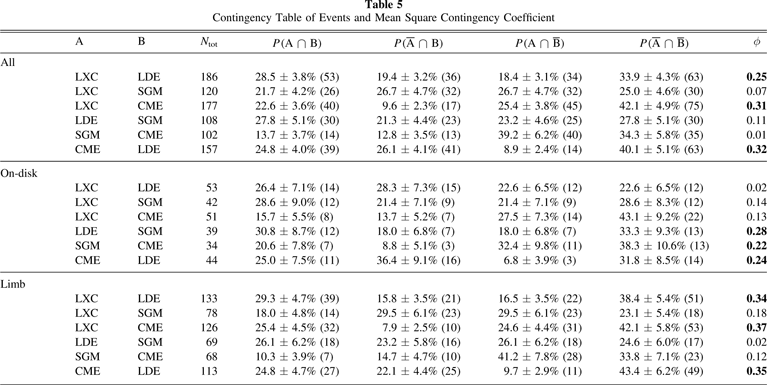Yusuke Iida (Kwansei Gakuin University)
Coronal mass ejection refers to a release of a large amount of plasma from the corona, which is the high temperature outer atmosphere of the Sun. When the ejected high-energy plasma reaches the Earth, it causes a disturbance of the Earth’s magnetosphere and has a great influence on our society. The development of a prediction scheme of coronal mass ejection is very important for the solar-terrestrial environment prediction.
Generally statistical results accumulated in previous researches are important for the development of prediction scheme. In other words, it will help to know in advance what is the key phenomenon for the prediction, not trying blindly. In regard to coronal mass ejection, we know
1) Coronal mass ejection occurs with the solar flare and/or filament eruption,
2) The occurrence rate depends on the X-ray class and duration of solar flares (solar flare parameters),
3) J-shaped / S-shaped structure (sigmoid) is often seen in the coronal image.
Further several papers report statistical results on the solar flare parameters.
However, these statistical studies on the solar flare parameters used different statistical methods, and we cannot evaluate the relative rank of them, which is important for the prediction scheme. Concerning the sigmoid, sufficient statistical research has not been done. It is because solar flare parameters can be extracted relatively easily from time series of X-ray flux data, whereas it is more difficult to extract sigmoid in the X-ray image. To this end, we carry out correlation analysis using the several but unique statistical indices for coronal mass ejection, solar flare parameters, and sigmoid.
We select the analysis events based on the soft X-ray data of the Hinode satellite. Soft X-ray is a wavelength that can capture the high temperature plasma, such as one to a few million K, and we cam see the sigmoidal structure in the corona clearly. However, since the Earth’s atmosphere absorbs the solar X-rays, the satellite observation is necessary to obtain X-ray image. X-ray telescope onboard the Hinode satellite continues to acquire solar X-ray images from 2006, and it provides the most adequate observation data for our research. We analyzed 211 X- and M-class solar flare events, which are captured by the Hinode satellite from December 2006 to June 2015.
For statistical analysis, a database of each event is necessary. Databases for coronal mass ejection, solar flare parameters, and sigmoid are required. As for coronal mass ejection, we used the database created by NASA. The database for X-ray class and the duration of the solar flare are created from time series of solar X-ray flux obtained by the GOES satellite. We improved the recognition method of flares by Aschwanden & Freeland (2006). We also create the database of sigmoid. We developed the new scheme to extract the bright regions in the X-ray images, and it is judged whether they are sigmoid or not by checking the shape of the bright region is J or S shaped. Figure 1 shows typical sigmoid extracted by our method.
We investigated correlations and dependencies among these database using several statistical methods, linear regression analysis, phi coefficient, Kolmogorov-Smirnov test and so on. Figure 2 shows the contingency table and the derived phi coefficient as one of the correlation analysis. We found that the occurrence position of the solar flare, the center or the limb of the sun, greatly affects the result. This is not due to a physical mechanism but is due to difficulty of distinguishing the solar limb events. This is an important result for the development of the prediction scheme. Throughout the analysis, we obtained,
1) The sigmoid and the flare duration correlate rather than the X-ray class of the flare in the disk events,
2) Most coronal mass ejection is accompanied with sigmoid in the disk events,
3) The duration and the X-ray class of the flare significantly correlates with the occurrence of coronal mass ejection, but the sigmoid structure does not in the limb events.
These results show importance of the sigmoidal structure to develop the prediction scheme of coronal mass ejection, considering that the coronal mass ejections on the disk have a larger influence on the Earth’s magnetosphere then those in the limb.
It is necessary to develop a fully automatic detection scheme of sigmoid structure to incorporate our results into the actual prediction scheme. In our method, human judgment of J^ or S-shape is necessary. Currently we are vigorously working on this subject. When we succeeded the development of a fully automated detection method of sigmoid, we are hoping to introduce it on PSTEP nugget, so please be looking forward to the next article.
Fig.1 Sigmoid detected with our method. The background is the X-ray image and the contours show the bright regions. Among the bright regions, those judged as S-letter or J-letter are extracted as sigmoid (modified from Kawabata et al., 2018).

Fig.2 2×2 contingency table and phi coefficient. The columns show the event name (1st and 2nd columns), the total number of events (3rd column), the probability and the occurrence number (4th to 7th columns), and the phi coefficient (8th column). LXC means Large X-ray Class of M2.3 or above, LDE means Long Duration Event lasting 3,385 seconds or longer, SGM means an event where sigmoid structure is seen, CME means an event accompanied by coronal mass ejection. Phi coefficient more than 0.2, which means weak-correlated, is shown in bold style in 8th column. (From Kawabata et al., 2018)

Reference:
Kawabata, Y., Iida, Y., Doi, T., Akiyama, S., Yashiro, S. and Shimizu, T., Statistical Relation between Solar Flares and Coronal Mass Ejections with Respect to Sigmoidal Structures in Active Regions, The Astrophysical Journal, 869, doi: 10.3847/1538-4357/aaebfc, 2018
